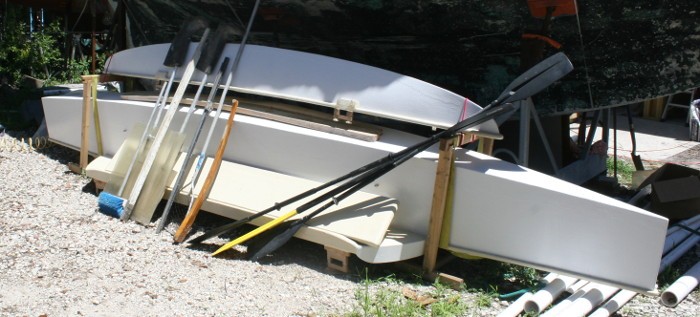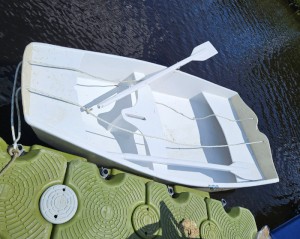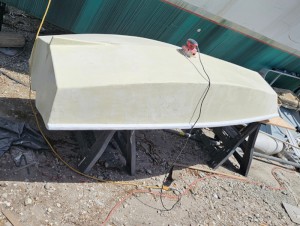Kaimusailing
s/v Kaimu Wharram Catamaran
| Vessel Name: | Kaimu |
| Vessel Make/Model: | Wharram Custom |
| Hailing Port: | Norwalk, CT |
| Crew: | Andy and the Kaimu Crew |
| About: | Sailors in the Baltimore, Annapolis, DC area. |
23 April 2024 | St Marys, GA
D4 Launchie
The laptop pooped the bed, so I have to scurry around with alternatives. Not as bad as typing on the phone.
17 April 2024 | St Marys, GA
Dinghy Skeg
I was suffering with what seemed like a cold and also had allergy symptoms. I awoke and felt fine. The green pollen that was coating everything was gone. Maybe it will return.
07 April 2024 | St. Marys, GA
Clammy Hands
Items came in from TEMU, the Chinese cut rate retailer. One was a nice little drone that cost about twelve and a half dollars. It looked like an easy thing to play with while I coughed and sneezed. I was fighting a summer cold, even though it is not summer elsewhere, it seems like it here. A nice [...]
02 April 2024 | St. Marys, GA
Sun Doggie
After laminating the cedar strips onto the gunwales of the dinghy I found the screws I used wouldn’t come out. The epoxy had seized them. The screw heads were stripped so I cut a straight slot in the heads with the cut off wheel. The cedar smoked when the screw heads got red hot. I could remove [...]
21 March 2024 | St. Marys, GA
Just Add Water
The rainy weekend started off with overcast and fog but no rain. It looked like I might be able to get something done on the D4 dinghy. I wanted to change the bow seat which is really the bow deck. The sailing option uses the deck to hold the freestanding mast. I didn’t like how the deck looked, [...]
01 March 2024 | St. Marys, GA
D4 Dinghy Alternative Seats
The rain event was more wind than rain, strong winds with gusts up to 44 mph. We drove into town to see what the harbor was like. There was a small sailboat that had dragged anchor and was sitting close to shore. The tide was out. We left and played with Bleu at Notter’s Pond.
Rig, Rain, Rearrangement

.
Both upper shrouds were pulled taut at the base of the mast and the starboard shroud was cut back so that a Sta-lok eye fitting and its 1/2" D shackle would terminate the shroud 6 inches shy of the length of the port shroud. Later another pair of nylon thimbles will be lashed here, thus insulating the starboard shroud for use as a SSB radio antenna.
.
I began clearing out the space under the boat so that the boatyard could get access to hoist the hulls with slings after the crane comes over to hoist the mast. We don't have a definite date for when this will happen and I expect to take a few days moving tools and supplies out from under the boat.
.
Gill and Richard had left a homemade plywood table that they called the "floppy table". The complaint was that the carriage bolts I gave him to bolt the table's legs and braces together were "galled" and unusable. The result was loose bolts and legs that were braced fore and aft, but floppy side to side. It was now my turn to try and stabilize the table so I could use it to help stow my stuff that comes out from under the boat.
.
I bought 3 ten foot 2X4's, one to stiffen the table top, corner to corner, underneath, and two that would be cut in half to make cross pieces to "X" frame the legs at the ends of the table to keep them from flopping side to side. I worked along screwing the long piece under the table top, then sized the crosspieces and began screwing them to the legs. I noticed the loose bolts and could see that the carriage bolt heads had not been driven into the wood to secure them, they turned freely, so it was impossible to tighten them. If you don't drive them into the wood, they gouge out the wood as they are turned by tightening the nut, and then they will never bite in. I decided to use a deck screw with a washer right at the edge of the bolt head. After driving the screw home, the bolt head was secured tightly. Then the nuts could be tightened. Perhaps I didn't have to put all those crosspieces on, but they were on, and now the table could no longer be called the "floppy table". It was very sturdy now.
.
There was a considerable amount of what is called trash underneath my boat. It consisted of plastic gloves, paper towels, bits of wood offcuts, and anything else that had been tossed aside or thrown down from above on deck. The task of gathering the bits of debris is made easier with a device called something like "grab 'n get", which is a stick with little plastic jaws at one end a handle with a lever at the other end. The one I inherited was discarded as broken. I found that a little wire inside had snapped, so I replaced it with a piece of string and was able to peck along on the ground, gathering up debris.
.
The string broke after a little while and I had to repair it again. This time I used annealed stainless wire that is used for mousing shackles. So far it has worked perfectly.
.
We were delayed for 4 days due to an extensive cool front coming through and drenching us with rain. There was a little time here and there to get things done, but mostly it was a time to wait for the weather to clear. Once it had cleared up, the work to rearrange everything continued.
.
I had been using an old rusty roll around scaffold as a work table with a cast off cabinet laid horizontally as a paint and epoxy mixing station that could be closed to keep out the rain. This pile of stuff was in the way, so the paints and epoxy stuff were relocated under the floppy table off to the side of Kaimu, in a large plastic set of storage drawers. The scaffold was then rolled away for someone else to use, and the cabinet was demolished and thrown into the dumpster.
.
It was time to move the mainsail and boom out from under the boat. A dynema zip line was rigged from the bow crosstube to the stern crosstube and tightened as much as possible. A pair of double blocks was set up as a 4:1 purchase that would lift the boom off its sawhorses and slide along the zipline toward the bow crosstube where it could be lowered onto the repositioned sawhorses. It would then be out of the way of lifting straps to raise the boat.
.
I took some time to inspect the mainsail to see what damage had been done. I already knew there was a missing batten and one badly damaged batten. What I found was much worse. It looked like there were no battens left intact. The batten pockets which had reinforcement with seat belt fabric were OK where they were reinforced, but in other spots the sailcloth had been worn through by chafe between the batten inside the sail and the shrouds rubbing from the outside.
.
The outrigger canoe was taking up a lot of acreage, so it was demounted and stacked up in a neat pile against the Westsail 32 hull that is in front of Kaimu. The photo shows the main hull inverted with the hiking seat stacked on top of the outboard side deck and the crossbeams and ama hull stacked on top of the main hull's bottom. It makes a very compact package.






